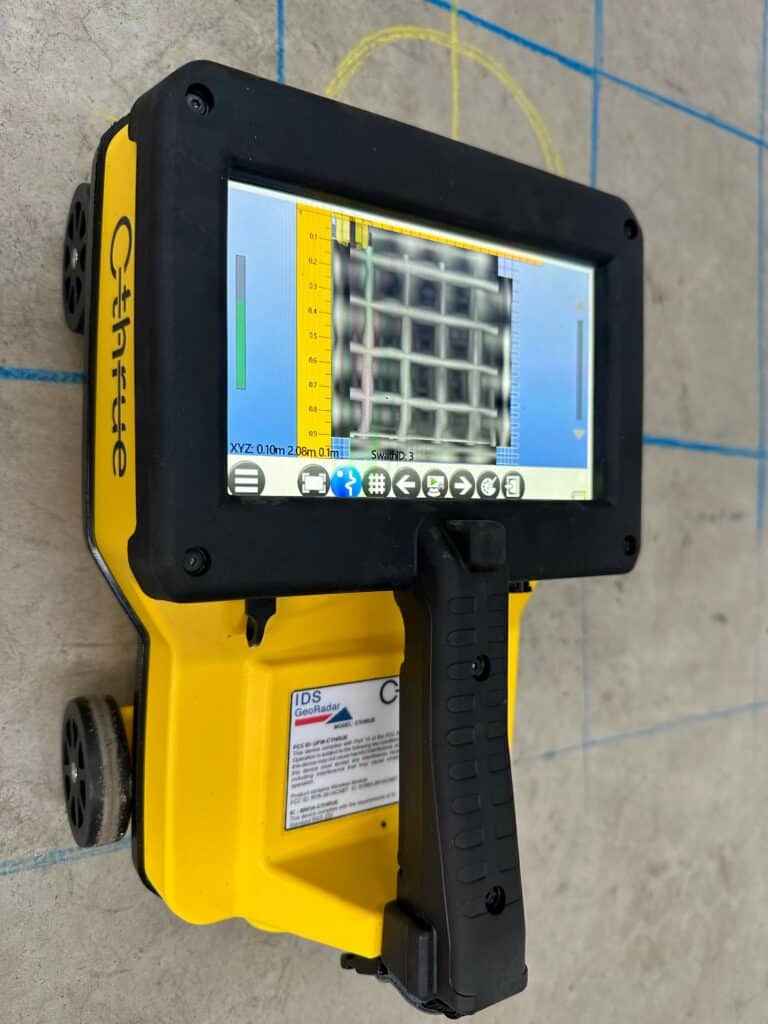Key Advantages of Making Use Of Concrete Scanning Innovation
Key Advantages of Making Use Of Concrete Scanning Innovation
Blog Article
Beyond the Surface: Leveraging Advanced Concrete Scanning Techniques for Unmatched Accuracy and Understanding
Advanced concrete scanning techniques have actually arised as crucial devices in this quest, using a peek underneath the surface to unveil a world of important insights. By harnessing sophisticated modern technologies, experts can reveal abnormalities, examine the problem of concrete structures, and make informed choices that shape the course of projects.
Relevance of Advanced Concrete Scanning
The value of making use of advanced concrete scanning methods hinges on the exceptional accuracy they supply for finding sub-surface abnormalities and making certain architectural integrity. By utilizing advanced technologies such as ground-penetrating radar (GPR), electro-magnetic induction, and advanced sonar imaging, building and construction specialists can delve underneath the surface of concrete structures with a degree of accuracy that far surpasses standard assessment techniques. Concrete Scanning. These strategies enable the identification of concealed risks like rebar rust, spaces, avenues, or post-tension wires that could jeopardize the stability and security of a framework over time
Additionally, advanced concrete scanning offers important insights into the overall condition of a concrete element without the demand for intrusive steps, lessening the risk of causing damage during the assessment procedure. The ability to determine the precise location and deepness of prospective issues enables targeted repairs and upkeep, ultimately extending the life expectancy of the structure and optimizing its efficiency. Fundamentally, the significance of sophisticated concrete scanning can not be overemphasized in the world of construction and facilities upkeep, where accuracy and reliability are vital.
Kinds Of Cutting-Edge Technologies

Anomalies and Flaw Detection

Along with GPR, concrete scanning methods like thermography and impact-echo testing are additionally effective in discovering defects and abnormalities. Thermography uses infrared modern technology to determine variants in surface area temperature level, suggesting potential locations of worry such as delamination or dampness ingress. On the other hand, impact-echo testing includes examining acoustic responses to discover gaps, cracks, and other flaws within the concrete. By leveraging these advanced techniques, professionals can proactively deal with structural issues, guaranteeing the long life and security of concrete structures.
Assessing Concrete Problem
How can designers properly evaluate the condition of concrete frameworks to guarantee their longevity and safety and security? Various sophisticated concrete scanning techniques are used for this purpose. Ground-penetrating radar (GPR) is frequently utilized to evaluate the interior structure of concrete, detecting spaces, fractures, and other abnormalities that may endanger its stamina.
In addition, visual inspection remains a basic component of concrete problem analysis. Engineers visually analyze the surface area try this website for indicators of deterioration, such as spalling, cracking, or discoloration. Integrating non-destructive testing methods with aesthetic inspections allows for a thorough assessment of concrete problem, making it possible for engineers to identify prospective problems at an early stage and execute that site timely maintenance or repairs. By leveraging these advanced techniques, engineers can guarantee the long-lasting toughness and security of concrete frameworks.
Enhancing Decision-Making Processes
In the world of facilities management, optimizing decision-making procedures is imperative for guaranteeing the effective upkeep and longevity of concrete frameworks. Enhanced decision-making processes in concrete management include making use of innovative scanning strategies to gather thorough data on the condition of structures. By leveraging innovations such as ground-penetrating radar and 3D imaging, stakeholders can make informed choices relating to reinforcement, substitute, or repair strategies.
These advanced scanning strategies provide invaluable insights right into the internal structure of concrete, recognizing potential problems such as voids, splits, or corrosion that may not show up externally. This level of thorough information permits proactive maintenance planning, lessening the threat of structural failures and raising the overall life expectancy of concrete structures.
Moreover, by incorporating digital paperwork and analysis tools into the decision-making process, stakeholders can track the development of concrete conditions in time, allowing predictive maintenance techniques and optimizing resource allocation. Ultimately, the combination of advanced concrete scanning strategies improves decision-making processes by providing unmatched precision, understanding, and efficiency in framework monitoring.
Final Thought
In final thought, advanced concrete scanning techniques offer unrivaled precision and insight in identifying abnormalities, flaws, and evaluating the condition of concrete frameworks. By leveraging sophisticated innovations, decision-making processes can be enhanced, leading to even more educated and effective services for maintaining and fixing concrete facilities. These techniques play an important function in ensuring the safety and security and durability of concrete structures, making them an indispensable device in the field of building and construction and design.
Additionally, advanced a knockout post concrete scanning gives vital insights right into the overall problem of a concrete aspect without the need for intrusive procedures, reducing the threat of triggering damage throughout the assessment procedure - Concrete Scanning. Another cutting-edge innovation is 3D X-ray scanning, which offers thorough pictures of the inner structure of concrete, supplying important details without the need for devastating screening. Additionally, Concrete Cover Meters are made use of to measure the density of concrete cover over reinforcement bars properly. Enhanced decision-making processes in concrete monitoring involve utilizing innovative scanning techniques to gather in-depth data on the condition of frameworks.In final thought, progressed concrete scanning methods supply exceptional precision and understanding in spotting abnormalities, defects, and assessing the condition of concrete frameworks
Report this page